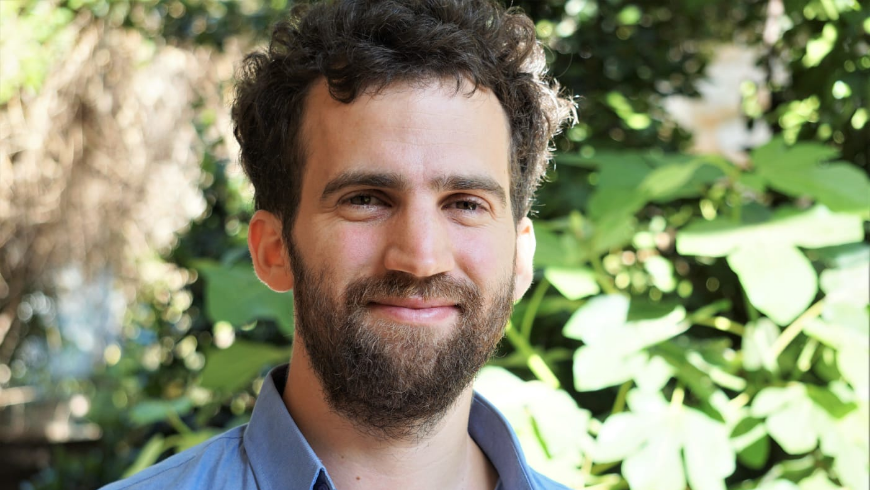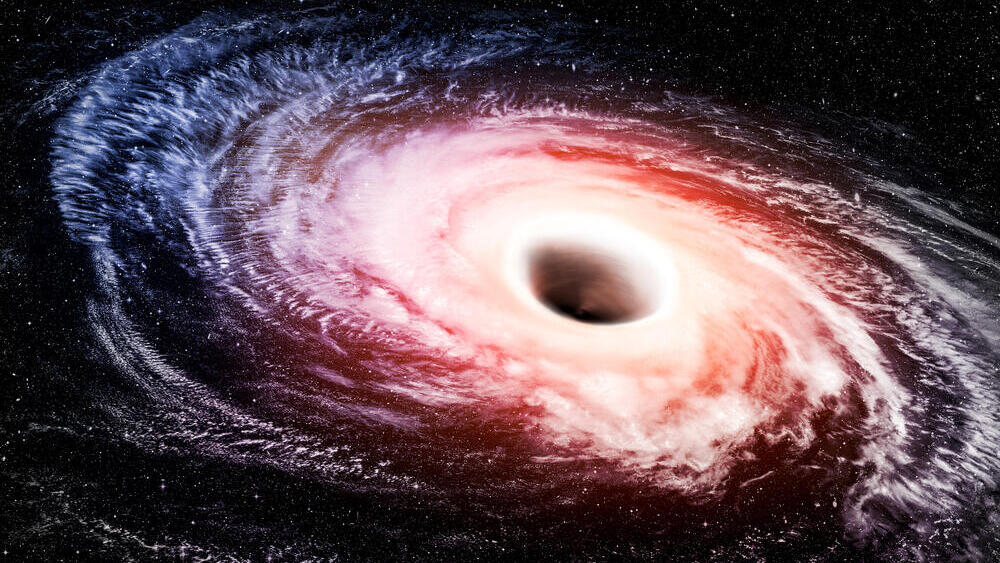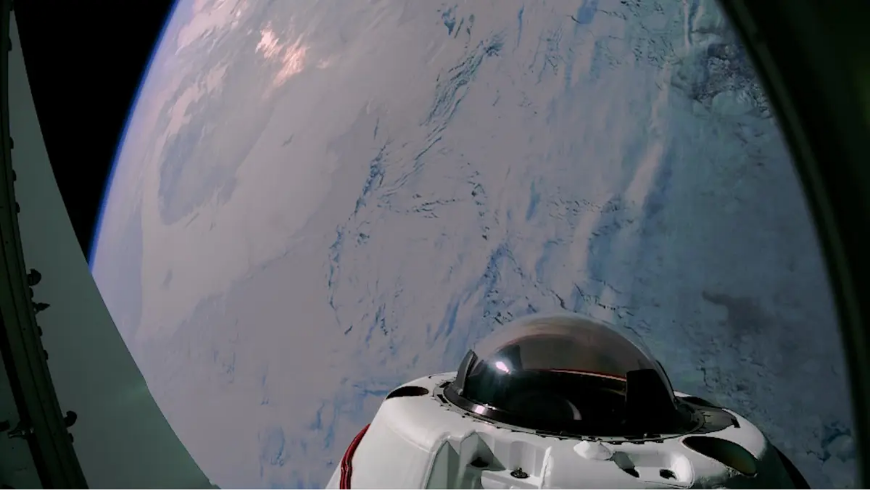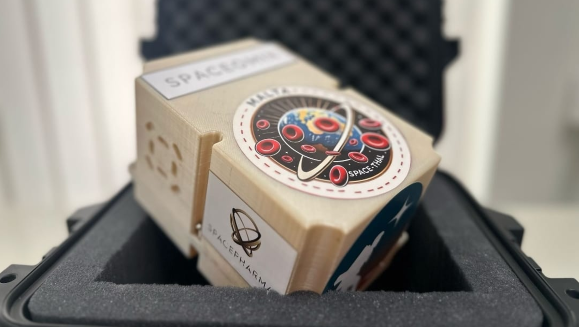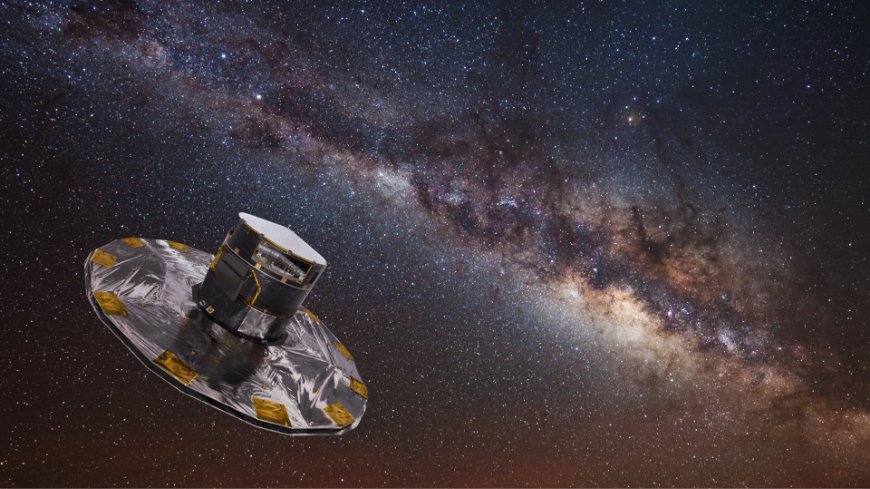Understanding black holes
Theoretical astrophysicist Dr. Itai Linial has been awarded a prestigious NASA fellowship through the Edwin Hubble Astrophysics Fellowship Program, making him one of 24 young researchers selected this year. Linial, currently based in New York for postdoctoral work at Columbia University and the Institute for Advanced Study in Princeton, studies high-energy astrophysical phenomena such as the violent disintegration of stars by black holes.
As part of the program, Linial was named one of nine Einstein Fellows—scientists focused on fundamental questions about the universe—and will conduct three years of fully funded research at New York University. He began his academic journey at the Hebrew University of Jerusalem, where his doctoral research under Prof. Re’em Sari focused on early radiation from supernovae.
“Our predictions may soon be tested using data from the Israeli space telescope ULTRASAT, currently in development at the Weizmann Institute,” Linial said. His PhD earned him both the Rothschild Fellowship and recognition from Yad Hanadiv.
In his postdoc work, he has shifted to the theoretical study of high-energy processes near supermassive black holes at galactic centers. “I study events such as stellar disruption to better understand how these black holes form and what their environments look like,” he explained.
Linial’s current research focuses on a rare phenomenon known as Quasi-Periodic Eruptions (QPEs)—brief, bright X-ray flares that last about an hour and repeat every few hours. “When a black hole tears apart and consumes a star, some of the leftover gas forms a disk around it,” Linial said.
He proposes that QPEs occur when a second star passes through this accretion disk and collides with its material, triggering bursts of X-rays. Observations of such flares during a recent stellar disruption appear to confirm this model.
“It’s a tremendous honor to receive this fellowship,” Linial said. “Only 24 researchers were selected from about 700 applicants. For me, it’s a chance to lead my own research, collaborate with top scientists, and focus full-time on a rapidly advancing field of study. I hope to be at the forefront of its discoveries in the coming years.”
Israeli experiment aboard private mission
On Monday, the Fram-2 mission launched from Cape Canaveral with four private astronauts aboard SpaceX’s Dragon Resilience spacecraft. It’s the first crewed flight in a polar orbit, passing over both poles as the Earth rotates.
Named after the Norwegian polar exploration ship Fram, the mission is commanded by 43-year-old Chinese billionaire Chun Wang, now residing in Malta. The crew also includes Norwegian 3D imaging expert Jannicke Mikkelsen, German polar researcher Rabea Rogge, and Australian adventurer Eric Philips.
The mission is set to last up to five days, during which the astronauts will perform various scientific experiments and observations—some focused on polar environments. A special observation dome has been installed on the spacecraft, allowing for unique imaging.
Get the Ynetnews app on your smartphone: Google Play: https://bit.ly/4eJ37pE | Apple App Store: https://bit.ly/3ZL7iNv
Physiological studies will also be conducted to examine how microgravity affects the human body, including the first-ever X-ray scan in space. Photo documentation from the mission already shows spectacular views from the Dragon spacecraft.
Among the onboard experiments is a miniature autonomous lab developed by Israeli company SpacePharma, which creates compact labs for microgravity research. This specific experiment tests the crystallization of a therapeutic antibody for a pharmaceutical company.
“The experiment was originally meant for the International Space Station but was delayed, so we quickly arranged to join Fram-2,” said SpacePharma CEO Yossi Yamin. The accelerated timeline required the process to be completed in just over three days instead of a month.
The goal is to test the lab system’s performance under extreme conditions, some of which result from Fram-2’s unique orbit. The polar trajectory likely exposes the lab to higher radiation, and unlike the ISS, the spacecraft experiences fewer vibrations.
Additional challenges, such as extreme temperatures and acidity changes, will be introduced manually. This marks SpacePharma’s 11th space mission, and its findings will be analyzed in Tampa after the spacecraft’s return—marking SpaceX’s first Pacific Ocean splashdown.
Farewell in deep space
The European Space Agency has officially ended the Gaia space telescope’s mission after 12 years, shutting down its instruments due to depleted cold gas reserves. Gaia had operated near the L2 point—1.5 million kilometers from Earth—where it mapped the sky with unprecedented precision. After deactivation, the spacecraft was moved into a more distant solar orbit to avoid interfering with future missions. Despite its shutdown, scientists stress the mission’s legacy is far from over.
“Gaia is a foundational tool supporting research from the solar system to distant galaxies,” said Prof. Shay Zucker of Tel Aviv University, who worked on Gaia’s scientific team. Fellow Tel Aviv researcher Prof. Tsevi Mazeh led the mission’s black hole detection efforts.
“We’re saying goodbye to the spacecraft—but not to the mission,” Zucker said. A summary of the first five years of Gaia’s data is expected next year, with full publication likely continuing into 2030.
Zucker led Gaia’s search for exoplanets using the transit method, which identifies planets by measuring dips in a star’s brightness as planets pass in front. Gaia’s third data release already included a list of such exoplanets, many also observed by NASA’s TESS telescope.
The next release is expected to include more long-period planets that only Gaia could detect due to its extensive sky monitoring. Gaia’s contributions cover nearly every astronomical field, from nearby asteroids to distant quasars.
“It’s estimated that around 14,000 scientific papers have relied on Gaia’s data—roughly 2,000 per year,” Zucker noted. The data will continue to be processed and analyzed for years, extending Gaia’s scientific impact long after its physical mission has ended. The spacecraft’s departure from active duty marks the end of a chapter, but the story of its discoveries is still being written. An ESA illustration shows Gaia scanning the Milky Way one last time.
The crux of bone loss in space
A new NASA-led study highlights just how serious bone loss can be during extended stays in space. Female mice sent to the International Space Station aboard a SpaceX Dragon spacecraft spent 37 days in orbit—the longest rodent study in space so far.
Researchers analyzed the structure of the mice’s femur bones, which bear most of the body’s weight on Earth, comparing them to two control groups on Earth. One control group experienced limited movement, while the other lived under similar environmental conditions.
The femurs of spaceflight mice showed significantly more holes than those of the control groups. Even the restricted-movement mice displayed bone loss, though less severe than that seen in microgravity.
Researchers also examined lumbar vertebrae, which are weight-bearing in humans but less so in mice. Correspondingly, vertebrae showed much less degradation—supporting the conclusion that mechanical unloading, not other environmental stressors, causes the most harm.
6 View gallery


Bone of mouse on Earth (right) compared to that of mouse after 37 days in space
(Photo: NASA study)
The implications for human space travel are clear: without gravity, bones break down rapidly, and this degradation cannot be countered by diet alone. Resistance-based exercise remains the best-known countermeasure, replicating the stress bones would normally endure under gravity.
The study underscores the challenge of maintaining astronaut health during long-term missions. A vivid image comparing the bone structure of a spaceflight mouse to that of an Earth-bound mouse shows the stark contrast in bone density.


